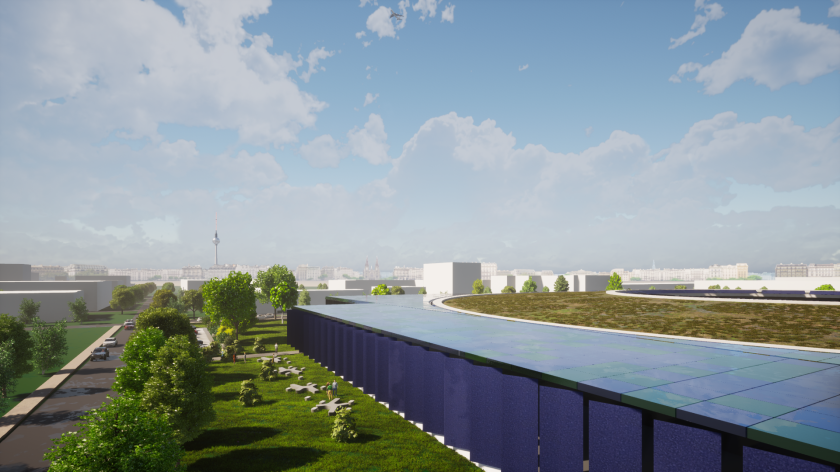The future of BESSY

This is what the successor source BESSY III could look like in the future. © Rendering: HZB
At the end of February 2024, a team at HZB published an article in Synchrotron Radiation News (SRN). They describe the next development goals for the light source as well as the BESSY II+ upgrade programme and the successor source BESSY III.
In autumn 2023, HZB celebrated 25 years of research at the BESSY II light source in Berlin-Adlershof. To continue offering scientists from all over the world the best research opportunities in the coming decades, it is important to have a vision for BESSY II. In addition, many light sources around the world are currently being modernised or even newly built to keep up with the latest research questions and contribute with state-of-the art research infrastructures.
The article "Material Discovery at BESSY" shows the relevance of BESSY light source for the research questions of the future. The HZB team describes the goals of the BESSY II+ upgrade programme. Among other things, the programme aims to expand operando techniques that are of great benefit in developing materials for the energy transition.
BESSY II+ is a bridge between BESSY II and the successor source BESSY III, which is scheduled to go into operation in the mid-2030s. It is set to become the "materials discovery machine": a combination of the extremely bright, soft 4th generation light source, the integrated research campus in Berlin-Adlershof and the quantitative measurement capabilities of the national metrology institute (PTB, Physikalisch-Technische Bundesanstalt) from synchrotron research.
The article has been published in open access and can be read in the journal SRN, which specialises in synchrotron research.
DOI: https://doi.org/10.1080/08940886.2024.2312051
https://www.helmholtz-berlin.de/pubbin/news_seite?nid=26346;sprache=en
- Copy link
-
Catalysis research with the X-ray microscope at BESSY II
Contrary to what we learned at school, some catalysts do change during the reaction: for example, certain electrocatalysts can change their structure and composition during the reaction when an electric field is applied. The X-ray microscope TXM at BESSY II in Berlin is a unique tool for studying such changes in detail. The results help to develop innovative catalysts for a wide range of applications. One example was recently published in Nature Materials. It involved the synthesis of ammonia from waste nitrates.
-
Samira Aden joins ETIP PV - The European Technology & Innovation Platform for Photovoltaics ESG Working Group
Samira Jama Aden, Architect Design Research, has joined the ETIP PV - The European Technology & Innovation Platform for Photovoltaics working group “Environmental, Social and Governance (ESG)”.
-
BESSY II: Magnetic ‘microflowers’ enhance magnetic fields locally
A flower-shaped structure only a few micrometres in size made of a nickel-iron alloy can concentrate and locally enhance magnetic fields. The size of the effect can be controlled by varying the geometry and number of 'petals'. This magnetic metamaterial developed by Dr Anna Palau's group at the Institut de Ciencia de Materials de Barcelona (ICMAB) in collaboration with her partners of the CHIST-ERA MetaMagIC project, has now been studied at BESSY II in collaboration with Dr Sergio Valencia. Such a device can be used to increase the sensitivity of magnetic sensors, to reduce the energy required for creating local magnetic fields, but also, at the PEEM experimental station, to study samples under much higher magnetic fields than currently possible.
